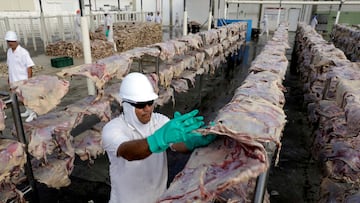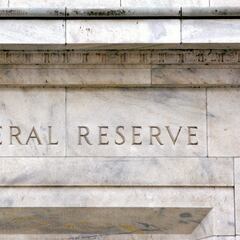Why are grocery prices going up so much in the US?
Grocery prices played a large role in the inflation growth seen in July, increasing by 0.3% over the month with a particular item driving the index up.


July July’s Consumer Price Index data was released yesterday, showing a 0.3 percent increase in grocery prices.
This rise was primarily attributed to the higher costs of beef products; the price of uncooked beef roasts surged by 6.5 percent in just one month. Uncooked beef steaks saw a rise of 2.3 percent, while uncooked ground beef experienced a 1.5 percent increase. Overall, the combined cost of beef and veal increased by 2.4 percent in the past month.
July’s USDA bi-annual cattle inventory report revealed U.S. beef cow inventory is the lowest it has been in over 50 years. This year has accompanied many near-record levels in expenses, interest rates, inflation, cattle prices, and beef demand to name a few. pic.twitter.com/4tQG3CRrVZ
— Compass Ag Solutions (@compassagsol) August 10, 2023
The fruits and vegetables index increased 0.4 percent over the month while the index for dairy and related products increased 0.5 percent in July after decreasing in each of the previous four months.
Why have beef prices been acutely affected?
According to Wells Fargo agricultural economist Michael Swanson, higher beef prices are a result of “the aftermath of one of the worst droughts we’ve had in the Southwest [last year] and a sell-off of all the cattle.”
The western United States, including states like California, Nevada, and Arizona, has been particularly at risk of drought due to its arid climate. In recent years, the western US experienced severe drought conditions, exacerbated by reduced snowpack, decreased precipitation, and higher temperatures. A quarter of the country remains in drought conditions.
Half of US corn and soybean acreages are experiencing drought conditions. What’s the potential impact for final crop yields? Presented by @CMEGroup pic.twitter.com/I9VASGdrgA
— Bloomberg Quicktake (@Quicktake) August 7, 2023
Droughts have severe effects on agriculture, as water shortages lead to reduced crop yields and livestock losses. As farms rebuild their livestock plenty of feed must be taken into account. Grain prices have increased by 25 percent over the last three years, making this aspect more expensive and slowing down the production of cattle.
Related stories
“Tightening cattle supplies are expected to cause a significant year-over-year decrease in beef production, the first decline since 2015,” said a March market outlook from the US Department of Agriculture.
CNN Business reported back in April that prices remained high over winter and spring despite consumers cutting back on beef. This lead to a slower demand, which has now grown due to summer.

